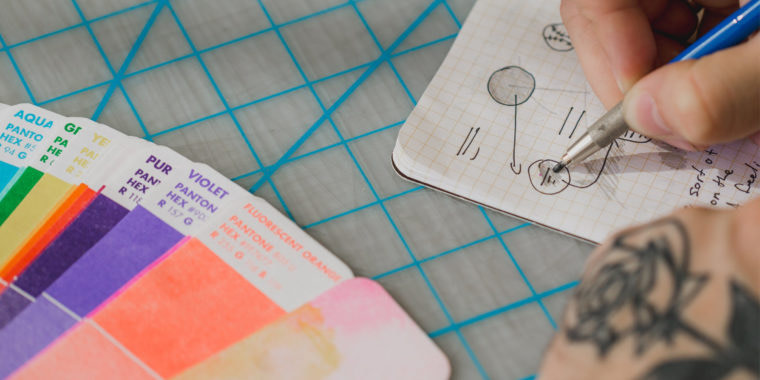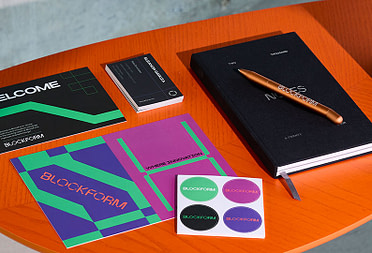How to work with a branding agency

We previously explored how to choose the right branding agency. Once you’ve found your ideal match, here’s how to get the best out of your new working relationship.
Working with an agency: a beginner’s checklist
To get the best out of any agency, you need to know how to work with them, which can mean adapting to their processes. Agencies have many varying clients with different needs, but there are usually a few conventions that apply across the board. Knowing how these work will give you a head start with your agency partner and help you develop strong working relationships quickly.
Here are some golden rules for being a great client.
- Scope out projects clearly
The agency needs to know the scope of your project so that they can apply the right costs and make sure they have the right skills available. They may even need to hire in temporary or permanent staff, depending on the scale of your branding project. If your requirement is more open-ended and you’re not sure what direction it will take you in, you may agree with the agency to work on a time-and-materials basis rather than a set cost or a quote. - Brief well
A creative brief is a real keystone of the branding process. It clearly and specifically sets out what you need, the background for the requirement and the business need it should address, and any must-haves like brand colors or naming conventions. The brief is also really helpful for checking that work has been delivered to the required standard and that everything is there that should be. - Agree on amends
Agencies aren’t mind-readers, so even with a brief in place there will usually be some tweaks and adjustments you want to make to the work they deliver. This is a standard way of working and should be factored into the costs. Make sure there’s clarity on how many times you can request changes (sometimes called rounds of amends) within the agreed costs. It’s also worth noting that amends – changes which help meet the brief more exactly – are different from additional briefing – adding in new requirements not previously requested. - Feedback constructively
As any creative professional will tell you, the language you use when giving feedback can make a world of difference in how easy it is to make changes. Try to be as factual and specific as possible and avoid speaking in emotional or personal terms like ‘I don’t like it’ or ‘it doesn’t feel energetic enough’. A good rule of thumb is to refer back to the brief and be specific about how the work could meet it better.
Know who’s who in your branding agency
A branding exercise, when it’s done well, is a multidisciplinary project. As well as the obvious visible changes like a new logo or an updated font, it includes background work such as brand strategy and competitor research to make sure the brand is as relevant as possible to your target audience and sets you apart from other businesses in your space.
Here are some of the most common roles found in branding and creative agencies, and how they contribute to your success. It’s a good idea to have a working knowledge of these roles so you know who does what and you can always find the best person to talk to when you get in touch.
- Creative Director
This person is the head of the creative team, and sets the direction for the agency. They’ll likely be approving work done for your business inside the agency, and keeping an overall eye on the project to make sure the quality of the work is high and that it’s focused on your brief. - Creative team
The creative team might include graphic designers, UX specialists, copywriters, animators, art directors and web designers. They’ll carry out the development of your project under the guidance of the creative director. - Strategist
A strategist (sometimes they’ll have a different job title like Brand Strategist or Creative Strategist) works on the underlying approach for your project, making sure it’s effective for your target market, audience and business sector. They’ll have a clear idea of what needs to be achieved and how to do it. - Project manager
On a larger project, a project manager may be employed to keep the different processes and people coordinated and the project timelines and deliverables on track. They’ll keep the project cost-effective and running to schedule. - Account manager
The agency will usually appoint a dedicated account manager to each client. They’ll be your main point of contact with the agency and should be available to you whenever you need to discuss the day to day progress of the project. They’re also the person to talk to about billing and payments.
How – and when – to measure results
There are lots of theoretical benefits to hiring an agency. But how do you know if your agency has delivered on its promise? And how long should you wait before you start expecting results?
The magic of KPIs
A KPI (key performance indicator) is a metric that’s used to determine success. In any given project there are often several KPIs in place at the same time, and taken together they can give you a reliable overall picture of how well things are going. Here are some common KPIs used to measure agency performance.
- NPS (Net Promoter Score)
This simple but powerful measure is taken by surveying customers and asking how likely they are to recommend your company to someone they know. The number of promoters (likely to recommend), detractors (unlikely to recommend) and neutral respondents is translated into a numerical score which you can track to see if it’s going up or down over time. - Impressions, clicks and social metrics
Collect data on digital engagement to see how effectively a campaign is reaching its audience. From Facebook ‘likes’ to email opens to clicks on ads, there are many types of data you can collect. Rather than gathering all of them, choose a few that you feel are most representative for your audiences and that you can interpret easily. - Sales and conversions
If sales are going up, it’s definitely a good sign! But you need to know whether they’re attributable to the work your agency has done. This can be tricky to figure out, but the rise in online shopping and ecommerce makes it easier to track individual sales to a particular campaign. Offline, customer surveys, intercepts and coupon codes can help you to piece the customer journey together.
It’s a good idea to work with your agency when defining KPIs. They should already be familiar with the kinds of measurement you want to do, and you’ll be able to agree a realistic target and timescale for improvement with them.
When to measure success
Although it’s not realistic to expect results straight away, you should begin measuring as early as possible. This is to give you a baseline to measure improvements against. Over time, you should see progress against the KPIs you’ve chosen. If things aren’t happening as quickly as you’d like, you then have a clear set of points to discuss with the account manager at your agency so you can plan together to improve results.
Looking for more branding ideas? Check out How to develop the right tone of voice for your brand
Keep in touch
Get design inspiration, business tips and special offers straight to your inbox with our MOOsletter, out every two weeks.





